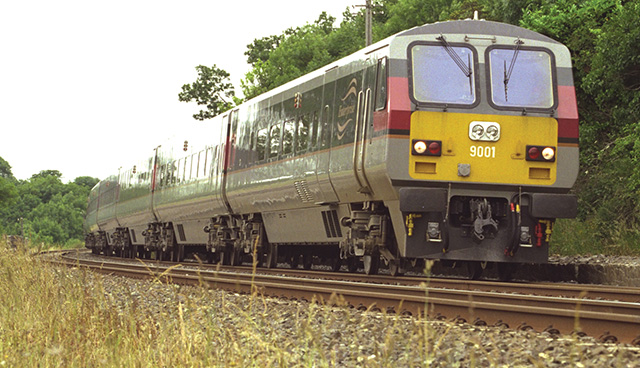Higher speed rail: A platform for change


David Gavaghan, co-founder of Aurora Prime Real Estate Fund and former Chair of CBI Northern Ireland, outlines how higher speed rail can provide a platform for unlocking the potential of the economic corridor between Dublin and Belfast.
“Existing transport links between Belfast and Dublin are inadequate and there is clear scope for enhancement. However, this project is as much about achieving economic and social progress as it is fulfilling a transport need,” outlines Gavaghan.
Observing that travel times between the two principal cities on the island have improved in recent times, Gavaghan outlines that rail connectivity improvements have not been on par with other major cities, and market competitors, across the globe.
Focussing on time and distance, he highlights that currently rail travel between Dublin Connolly and Belfast Central takes approximately 130 minutes for a distance of just under 100 miles. This contrasts with the Dublin to Cork train, which takes just 20 minutes longer for a distance greater by 60 miles.
“It is entirely feasible in my view that the journey time between Dublin-Belfast could be improved to a 60-minute travel. This would start to provide the sort of service which has been available to most significant cities across the globe for decades.
“The sad fact is that at present much of our infrastructure is far from world class and there is a need to shift away from the aspirational view of what we might and could have.
“If we are going to have a chance of persuading people that we are positioning ourselves in a globally competitive market then we urgently need to attend the delivery of a higher speed rail connection between our two principal cities.”


Frequency
Describing the daily frequency of trains between Dublin and Belfast as “embarrassing” when benchmarked with similar connections in Britain and Europe, he points out that the increase to 16 trains per day between Dublin and Cork has resulted in a dramatic increase in passenger numbers.
He believes that his vision of 40 trains operating between Belfast and Dublin on a daily basis, with a journey time of under 60 minutes is one that is widely shared as a method of transforming travel patterns along the eastern corridor. However, he adds that in order for this to be achievable in the near future, there needs to be a greater level of urgency in the time between developing concept and final delivery.
“Competitive regions and cities are the ones which capture the surrounding population, allow them to travel and into principal conurbations in under 60 minutes. We need to wake up to the fact that we have to get on with delivering this infrastructure,” he states.
“These core developments are the drivers to make the Dublin-Belfast economic corridor what it has the potential to be: a European growth hub of transnational importance.
“Doing so will give us the potential to compete with larger successful urban areas such as Hamburg, Manchester and Milan and the challenge is to create and accommodation that will allow us to match this competitiveness.
“I believe that higher speed rail can be a platform to transform connectivity between Dublin and Belfast, addressing not just transport need but also achieving economic and social progress.”





